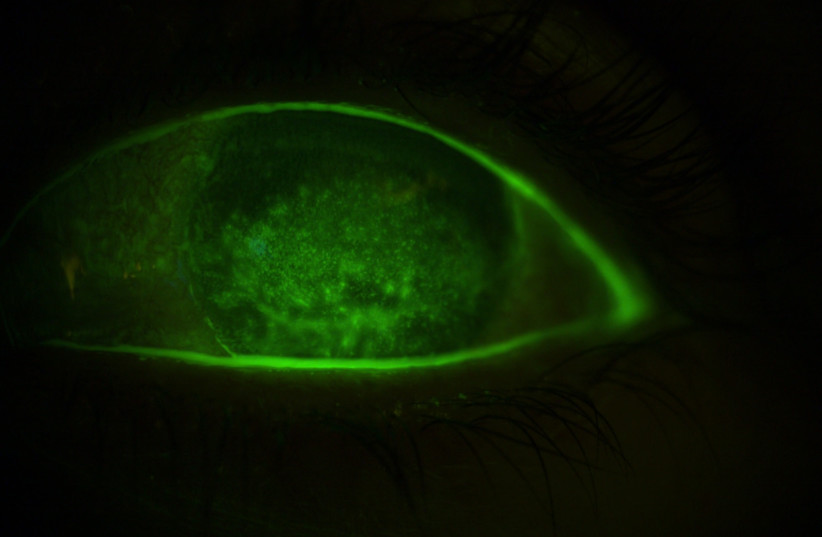An Israeli patient almost lost her vision because she used cosmetic, colored contact lenses to upgrade her costume for Purim by “changing” the color of her iris.
These lenses are often presented as fashion accessories on social media, persuading many consumers, mostly young people, to purchase them. But ophthalmologists warn against using them, explaining that they pose a danger to the eyes and vision.
“Nonprescription lenses sold in costume shops or online are unlikely to pass adequate quality control, so they may cause irreversible damage to the eye,” said Dr. Yishay Weill, an ophthalmologist and corneal-surgery specialist at Jerusalem’s Shaare Zedek Medical Center who has treated such patients.
A 36-year-old woman (A.) who has worn cosmetic colored lenses from time to time bought a new type of colored lenses. Four hours after putting them on, she began to feel severe pain in both eyes and blurred vision, and her eyes became red and watery. She removed them, but the following day, when the symptoms worsened and her vision deteriorated, she had an eye examination at Shaare Zedek.
“In the morning, I was scared because my eyesight was really bad,” A. said. “I couldn’t function, let alone drive, and my eyes hurt so badly that I couldn’t open them. I realized that my eyes were in danger, and that I had to run to see an eye doctor.”
Damage following use of colored contacts
In the emergency room, the ophthalmologists diagnosed a significant visual impairment called severe keratitis, which is accompanied by edema and multiple opacities in the cornea. She was immediately admitted to the ophthalmology department for antibiotic treatment and steroids.

“In nonstandard cosmetic lenses, the color that gives them their unique appearance contains chemicals and other harmful substances that can cause a severe inflammatory reaction in the eye,” Weill said. “In addition, irregularity of the back part of the lens or incompatibility with the structure of the user’s cornea can cause very painful scratches on the cornea, ulcers, infections, and even loss of vision.”
Since these people do not wear lenses regularly and have not received proper training, they tend to use the lenses in a way that endangers the eye, he said.
Teenagers and sometimes even adults fail to take care of the basic hygiene of the lenses. They sleep with them, wash them with tap water instead of with a special cleaning solution, and sometimes also transfer the lenses from one to another person. Improper use of contact lenses can damage vision irreversibly, Weill said.
Purchase contact lenses only after a doctor or optometrist has checked that they are suitable for you, he said, adding that it is better not to wear cosmetic lenses.
Make sure the contact lenses are not past the expiry date; never share contact lenses with another person; observe the rules of hygiene and correct fitting of contact lenses; and do not sleep, shower, or swim with them in your eyes, Weill said. If you feel discomfort, or if the eye becomes red, immediately remove the contact lenses and contact an ophthalmologist, he said.
“The treatment was very intense,” A. said. “I had to use antibiotic eye drops every hour, around the clock, including at night. I didn’t sleep, and I was really worried that I was losing my sight.”
After a four-day hospitalization, her vision improved and the inflammation lessened, but corneal clouding still remained, she said.
“My eyesight was still not good,” A. said. “I still couldn’t drive [or] use the computer, but at least I could open my eyes and be with my children.”
Still being monitored at the hospital’s eye clinic, A. feels that she got her sight back.
“It is important for me to thank the medical team and to warn all contact lens users to buy lenses only from an authorized place and after an adjustment by an optometrist or ophthalmologist,” she said. “If you feel there is a problem, don’t wait. Seek medical treatment immediately.”
During follow-ups at the eye clinic, and under continued treatment, her vision continued to improve, the cloudiness cleared up, and after more than six weeks, she was fortunately able to see well.
“A’s story could have ended differently, with a significant loss of sight in both eyes and a real disability,” Weill said.
